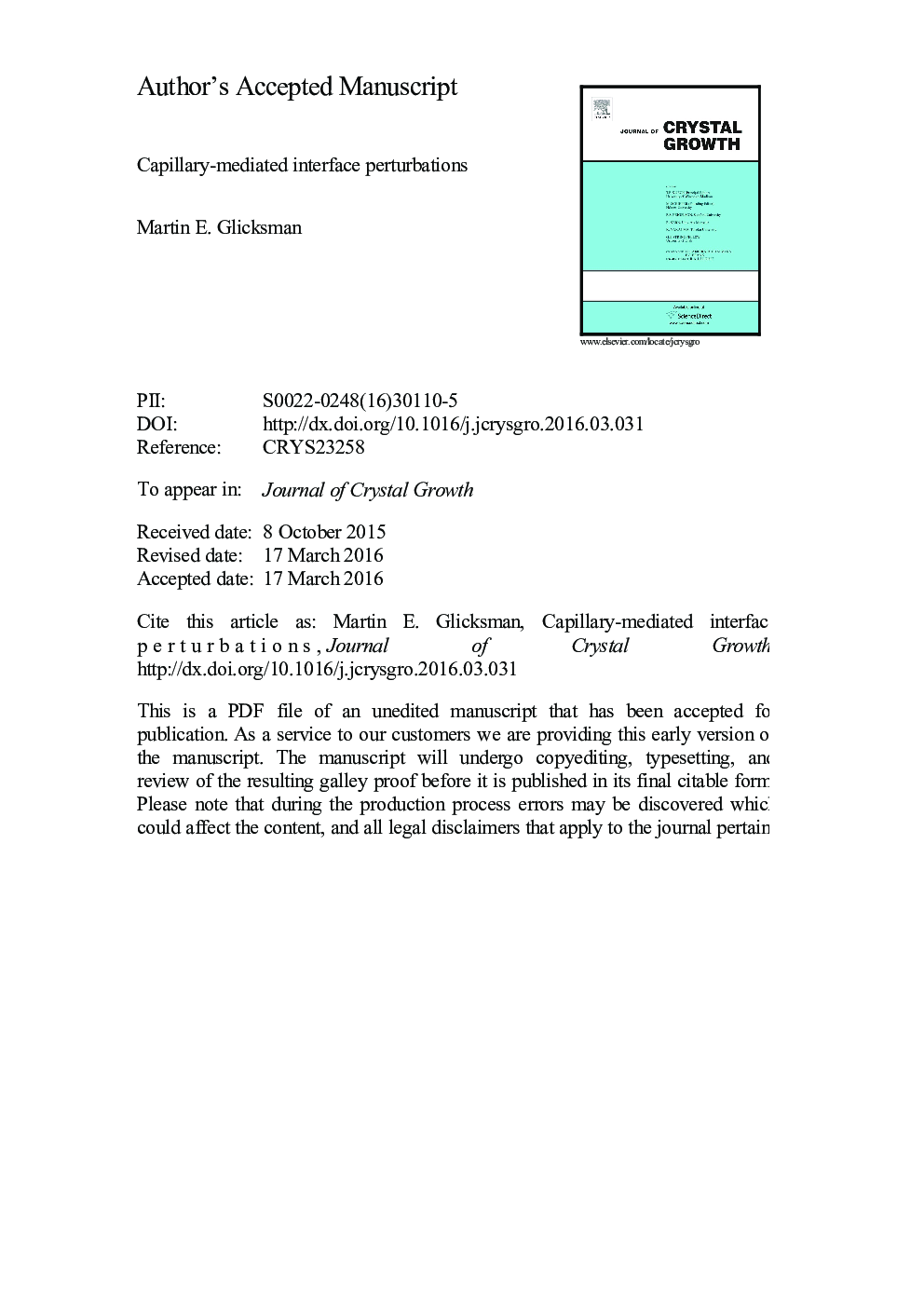| Article ID | Journal | Published Year | Pages | File Type |
|---|---|---|---|---|
| 8149405 | Journal of Crystal Growth | 2016 | 44 Pages |
Abstract
Leibniz-Reynolds analysis identifies a 4th-order capillary-mediated energy field that is responsible for shape changes observed during melting, and for interface speed perturbations during crystal growth. Field-theoretic principles also show that capillary-mediated energy distributions cancel over large length scales, but modulate the interface shape on smaller mesoscopic scales. Speed perturbations reverse direction at specific locations where they initiate inflection and branching on unstable interfaces, thereby enhancing pattern complexity. Simulations of pattern formation by several independent groups of investigators using a variety of numerical techniques confirm that shape changes during both melting and growth initiate at locations predicted from interface field theory. Finally, limit cycles occur as an interface and its capillary energy field co-evolve, leading to synchronized branching. Synchronous perturbations produce classical dendritic structures, whereas asynchronous perturbations observed in isotropic and weakly anisotropic systems lead to chaotic-looking patterns that remain nevertheless deterministic.
Related Topics
Physical Sciences and Engineering
Physics and Astronomy
Condensed Matter Physics
Authors
Martin E. Glicksman,
